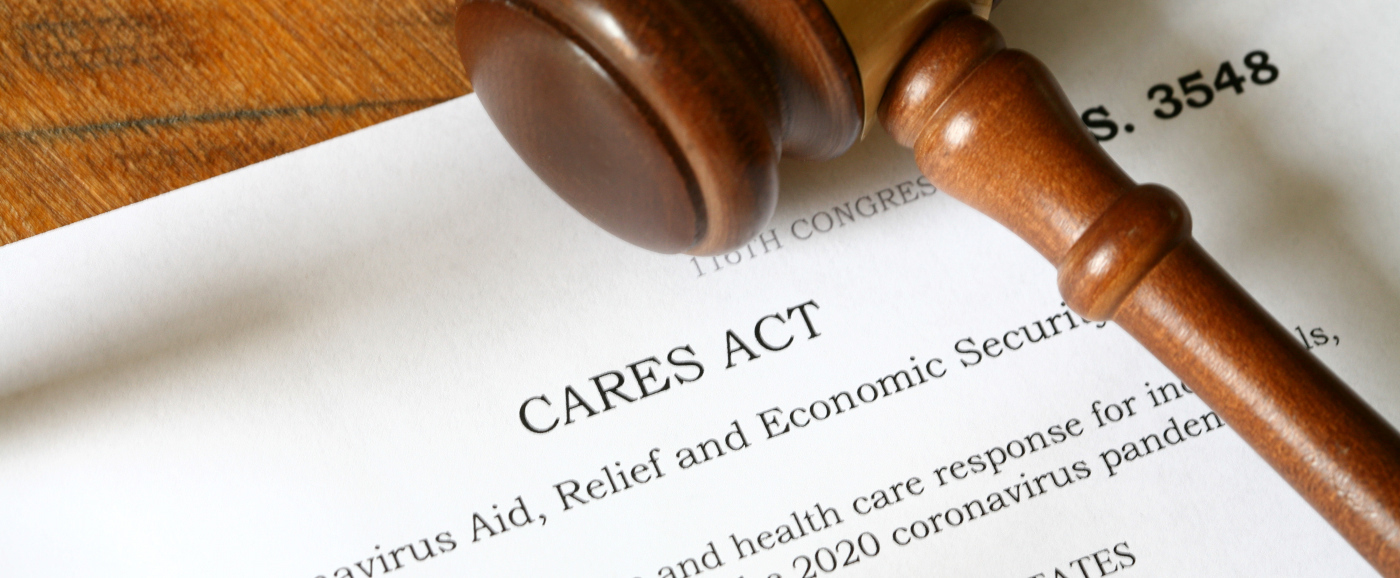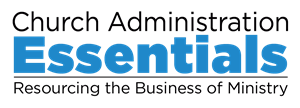
Payroll Protection Program
By Rollie Dimos | Compensation & Payroll
The $2.2 trillion Coronavirus Aid, Relief, and Economic Security Act (CARES Act) signed into law on March 27 provides direct benefits to American workers, families and businesses, including churches.
One of these benefits is the Payroll Protection Program. This $349 billion economic assistance program provides small business loans to employers to help cover payroll and other operating expenses. The program provides low interest, low fee, loans up to $10 million through the Small Business Administration to help employers cover wages, health care, paid leave, rent and utilities. These loans are available to employers, including churches, with fewer than 500 employees.
The maximum loan amount is equal to 2.5x your average monthly payroll and up to 100% of the loan can be forgiven. The Paycheck Protection Program and loan forgiveness are intended to provide economic relief to small businesses, including nonprofits, that are adversely impacted due to the Coronavirus Disease.
Local lenders are handling these loans for the SBA and the application window opened on Friday, April 3, 2020.
Here are some specific questions and answers regarding the Payroll Protection Program.
Q1: What size employers are eligible for the Payroll Protection Program (PPP)?
A: An employer is eligible if they have 500 or fewer employees whose principal place of residence is in the United States and they were in operation on February 15, 2020. Do not include independent contractors when calculating your number of employees.
Q2: Are churches eligible to apply for the Payroll Protection Program?
A: Yes, the PPP includes a tax-exempt nonprofit organization described in section 501(c)(3) of the Internal Revenue Code (IRC), a tax-exempt veterans organization described in section 501(c)(19) of the IRC, or a tribal business concern described in section 31(b)(2)(C) of the Small Business Act.
Q3: Are sole proprietorships or independent contractors eligible for PPP?
A: Yes, you are also eligible for a PPP loan if you are an individual who operates under a sole proprietorship or as an independent contractor or eligible self-employed individual.
Q4: I’m a minister who is paid by my church on a 1099-MISC. Am I eligible?
A: Yes, as an independent contractor, you are eligible to apply for a PPP loan for yourself. Your church can also apply for a PPP loan if they have W-2 employees.
Q5: Is the PPP “first-come, first-served?”
A: Yes. The funds allocated to the PPP are capped at $349 billion. It is important for churches and other small businesses to apply as soon as possible.
Q6: What can the PPP loans be used for?
A: The proceeds of a PPP loan are to be used for:
- Payroll costs (as defined in another Q&A below).
- Costs related to the continuation of group health care benefits during periods of paid sick, medical, or family leave, and insurance premiums.
- Mortgage interest payments (but not mortgage prepayments or principal payments).
- Rent payments.
- Utility payments.
- Interest payments on any other debt obligations that were incurred before February 15, 2020.
- Refinancing an SBA EIDL loan made between January 31, 2020 and April 3, 2020.
Q7: How much of the PPP loan must be used for payroll costs?
A: At least 75 percent of the PPP loan proceeds must be used for payroll costs. The SBA believes this is consistent with Congress’ overarching goal of keeping workers paid and employed.
Q8: What documentation must be provided to obtain a loan?
A: You must submit such documentation as is necessary to establish eligibility such as payroll processor records, payroll tax filings, or Form 1099-MISC, or income and expenses from a sole proprietorship.
For borrowers that do not have any such documentation, the borrower must provide other supporting documentation, such as bank records to demonstrate the qualifying payroll amount and meet the applicable SBA employee-based size standards.
Q9: How do I calculate the maximum amount I can borrow?
A: The maximum loan amount is roughly 2.5x your monthly payroll, up to $10 million. The following methodology, which is one of the methodologies contained in the Act, will be useful for many applicants:
Step 1: Aggregate payroll costs (see definition in next Q&A) from the last twelve months for employees whose principal place of residence is the United States.
Step 2: Subtract any compensation paid to an employee or sole proprietor in excess of an annual salary of $100,000.
Step 3: Calculate average monthly payroll costs (divide the amount from Step 2 by 12).
Step 4: Multiply the average monthly payroll costs from Step 3 by 2.5.
Step 5: [Only applicable if you have an existing SBA Economic Injury Disaster Loan] Add the outstanding amount of an existing EIDL made between January 31, 2020 and April 3, 2020, less the amount of any “advance” under an EIDL COVID-19 loan (because it does not have to be repaid).
Important note: Do not include compensation you pay to independent contractors in your payroll calculation.
Example 1 – The church’s annual payroll is $120,000 and no employees make more than $100,000.
- Average monthly payroll: $10,000
- Multiply by 2.5 = $25,000
- Maximum loan amount is $25,000
Example 2 – The church’s annual payroll is $1,500,000 and some employees make more than $100,000 which totals $300,000.
- Subtract compensation amounts in excess of an annual salary of $100,000: $1,500,000 - $300,000 = $1,200,000
- Average monthly qualifying payroll: $100,000
- Multiply by 2.5 = $250,000
- Maximum loan amount is $250,000
Q10: What qualifies as “payroll costs?”
A: Payroll costs consist of compensation to employees (whose principal place of residence is the United States) in the form of:
- Salary, wages, commissions and cash tips.
- Payments for vacation, parental, family, medical, or sick leave.
- Allowance for separation or dismissal.
- Payment for benefits such as group health care coverage, including insurance premiums and retirement.
- Payment of state and local taxes assessed on compensation of employees.
For an independent contractor or sole proprietor, payroll can also include net earnings from self-employment or similar compensation.
Important Note: The guidance doesn’t address these components specifically, but it would seem reasonable that a minister’s housing allowance should be included when calculating total payroll, as well as nonaccountable allowances like a car allowance or cell phone allowance.
Q11: What doesn’t qualify as “payroll costs?”
A: The Act expressly excludes the following:
- Any compensation of an employee whose principal place of residence is outside of the United States.
- The compensation of an individual employee in excess of an annual salary of $100,000.
- Federal employment taxes imposed or withheld between February 15, 2020 and June 30, 2020, including the employee’s and employer’s share of FICA (Federal Insurance Contributions Act) and Railroad Retirement Act taxes, and income taxes required to be withheld from employees.
- Qualified sick and family leave wages for which a credit is allowed under sections 7001 and 7003 of the Families First Coronavirus Response Act (Public Law 116–127).
Q12: What is the interest rate on a PPP loan?
A: The interest rate is one percent.
Q13: What will be the maturity date on a PPP loan?
A: The maturity is two years. While the Act provides that a loan will have a maximum maturity of up to ten years from the date the borrower applies for loan forgiveness, the SBA has decreased it to two years.
Q14: When will an organization have to begin paying principal and interest on a PPP loan?
A: You will not have to make any payments for six months following the date of disbursement of the loan. However, interest will continue to accrue on PPP loans during this six-month deferment.
Q15: Can the PPP loan be forgiven in whole or in part?
A: Yes. The amount of loan forgiveness can be up to the full principal amount of the loan and any accrued interest. That is, the borrower will not be responsible for any loan payment if the borrower uses all of the loan proceeds for forgivable purposes described below and employee and compensation levels maintained.
The actual amount of loan forgiveness will depend, in part, on the total amount of payroll costs, payments of interest on mortgage obligations incurred before February 15, 2020, rent payments on leases dated before February 15, 2020, and utility payments under service agreements dated before February 15, 2020, over the eight-week period following the date of the loan.
However, not more than 25 percent of the loan forgiveness amount may be attributable to non payroll costs. While the Act provides that borrowers are eligible for forgiveness in an amount equal to the sum of payroll costs and any payments of mortgage interest, rent, and utilities, the Administrator has determined that the non-payroll portion of the forgivable loan amount should be limited to effectuate the core purpose of the statute and ensure finite program resources are devoted primarily to payroll.
Important note: The SBA will issue additional guidance on loan forgiveness.
Q16: What forms are needed to submit an application?
A: The applicant must submit SBA Form 2483 (Paycheck Protection Program Application Form) and payroll documentation, as described earlier.
The lender must submit SBA Form 2484 (Paycheck Protection Program Lender’s Application for 7(a) Loan Guaranty) electronically in accordance with program requirements and maintain the forms and supporting documentation in its files.
Contact your local lender for additional guidance and to determine if they are participating in the loan program.
Q17: What certifications need to be made on the loan?
A: On the Paycheck Protection Program application, an authorized representative of the organization must certify in good faith to all of the following:
- The applicant was in operation on February 15, 2020 and had employees for whom it paid salaries and payroll taxes or paid independent contractors, as reported on a Form 1099-MISC.
- Current economic uncertainty makes this loan request necessary to support the ongoing operations of the applicant.
- The funds will be used to retain workers and maintain payroll or make mortgage interest payments, lease payments, and utility payments.
- Documentation verifying the number of full-time equivalent employees on payroll as well as the dollar amounts of payroll costs, covered mortgage interest payments, covered rent payments, and covered utilities for the eight-week period following this loan will be provided to the lender.
- Loan forgiveness will be provided for the sum of documented payroll costs, covered mortgage interest payments, covered rent payments, and covered utilities. As explained earlier, not more than 25 percent of the forgiven amount may be for non-payroll costs.
- During the period beginning on February 15, 2020 and ending on December 31, 2020, the applicant has not and will not receive another loan under this program.
- That all information provided for this application is true and accurate in all material respects.
Important note: The person who certifies this loan can be held legally liable if the funds are used for unauthorized purposes or if they knowingly provide false information. For example, not more than 25 percent of loan proceeds may be used for non-payroll costs. Punishment for knowingly providing false information may include imprisonment up to thirty years and/or a fine up to $1,000,000.
For more information, visit the SBA.gov. The final guidance provided by the SBA can be viewed here.
 ASSEMBLIES OF GOD
ASSEMBLIES OF GOD